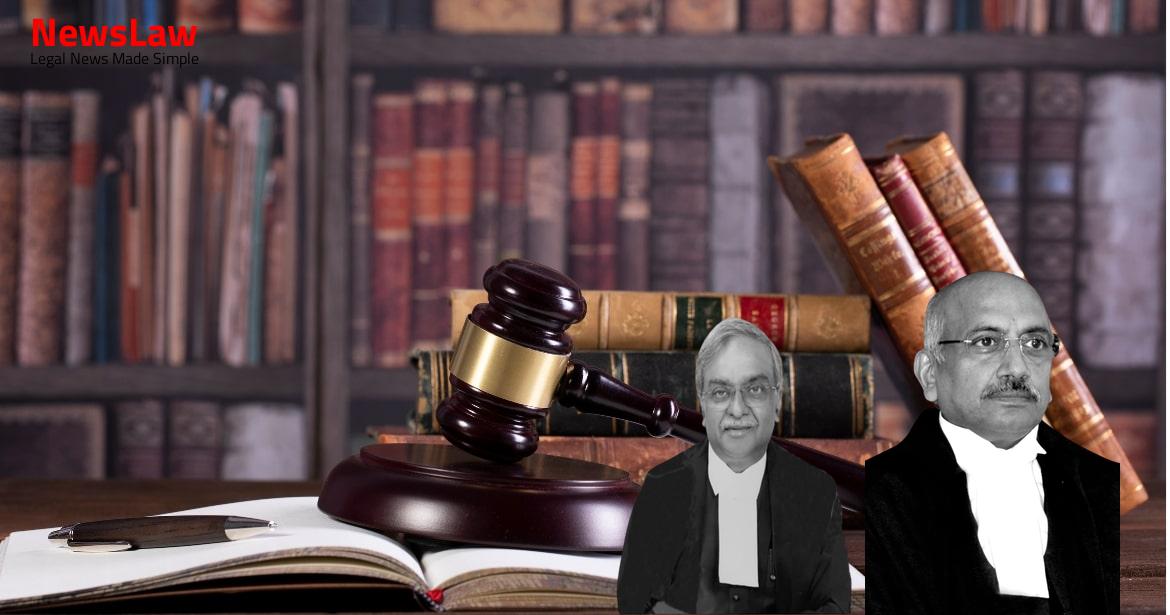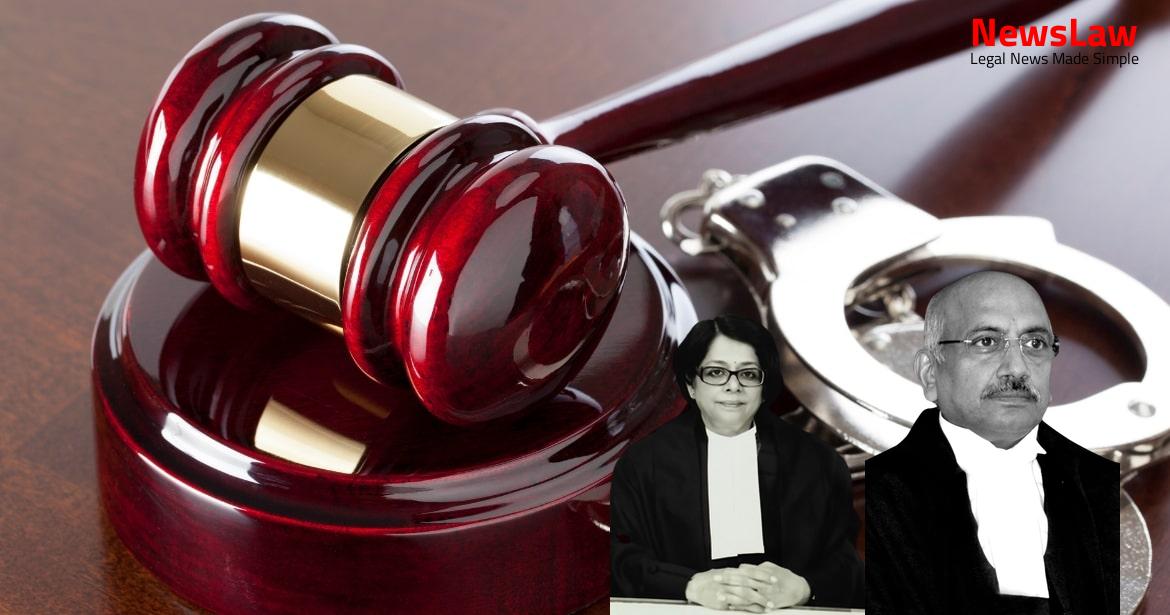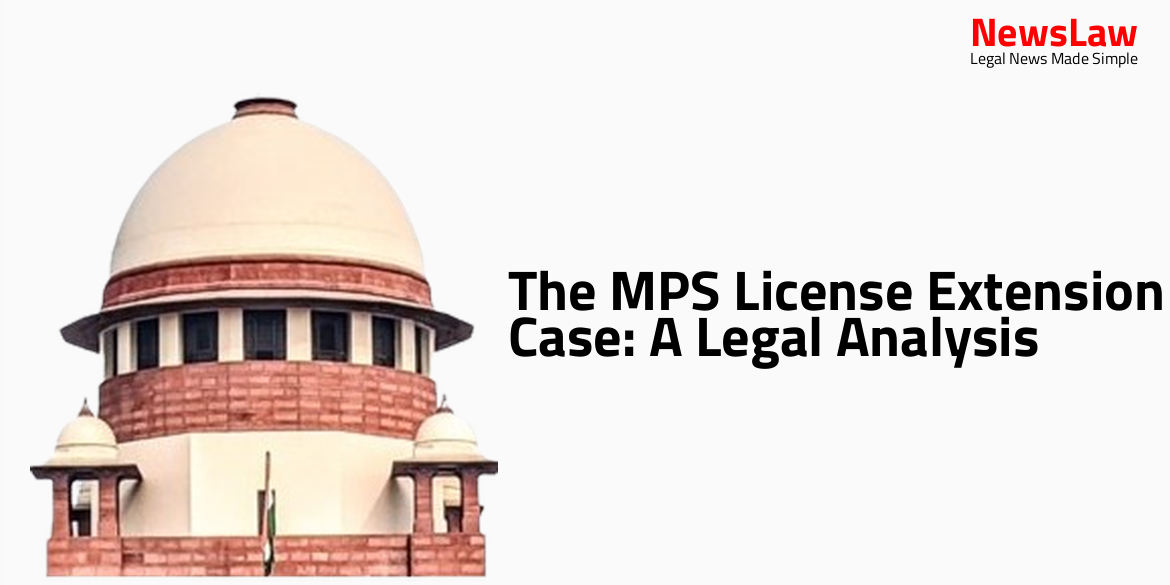The High Court’s legal analysis on the classification of Medical Oxygen and Nitrous Oxide as medicines under tax law sheds light on the intricate statutory interpretation principles. The court’s decision emphasized the medicinal properties of these substances and their recognized use in the diagnosis, treatment, and prevention of diseases. Stay informed on the significance of this legal classification in our detailed blog post.
Facts
- The respondent is engaged in the manufacturing and trading of industrial gases as well as Medical Oxygen IP and Nitrous Oxide IP.
- The Appellate Deputy Commissioner affirmed the assessment of the Commercial Tax Officer in a June 2006 order.
- The High Court interpreted Section 3(b)(i) of the Drugs and Cosmetics Act 1940 to include substances used for treatment, prevention, and mitigation of diseases or disorders.
- The High Court determined that Medical Oxygen IP is used for patient treatment and disease mitigation, while Nitrous Oxide IP is used as an anesthetic in short surgical procedures.
- The Sales Tax Appellate Tribunal allowed the appeal filed by the respondent based on a judgment of the Andhra Pradesh High Court in Inox Air Products Ltd v The Assistant Commissioner (CT), Hyderabad.
- The ruling was dated 25 November 2014.
Also Read: Legal Analysis on Arbitration Petition Limitation Period
Issue
- The issue in the present appeals is whether ‘Medical Oxygen IP’ and ‘Nitrous Oxide IP’ should be classified under Entry 88 of Schedule IV or as ‘unclassified goods’ under Schedule V of the Andhra Pradesh Value Added Tax Act 2005.
- Classification of the two products will determine the applicable tax rate – either 4%/5% under Entry 88 or 12.5%/14% under Schedule V.
Also Read: Analysis of High Courts’ Jurisdiction and Court Orders Under Article 142
Arguments
- Section 3(b)(i) of the 1940 Act defines a „drug‟ broadly as a medicine or substance used for or in the diagnosis, treatment, mitigation or prevention of any disease or disorder.
- Medical Oxygen IP and Nitrous Oxide IP are widely known for their curative properties and as medicines in the diagnosis, treatment, mitigation and prevention of diseases and disorders.
- Medical Oxygen and Nitrous Oxide are included in the Indian Pharmacopoeia which prescribes standards for drugs.
- Applying the principle of ejusdem generis, it cannot be said that gases are „similar articles‟ to the other products specified in the entry.
- The term „used for or in‟ employed in Section 3(b)(i) qualifies only „substances‟ and not „medicines‟.
Also Read: Electoral Malpractices in Mayor Election
Analysis
- Entry 88 of Schedule IV includes drugs and medicines falling within the ambit of clauses (i), (ii) and (iii) of Section 3(b) of the 1940 Act.
- Any drug or medicine falling within the ambit of Section 3(b) falls within Schedule IV.
- Medical grade oxygen is specifically excluded from Entry 100(36) of Schedule IV.
- Schedule V of the 2005 Act specifies that goods not falling within Schedules I, III, IV, and VI shall be taxed at a rate of 14.5%.
- Section 3(b) of the 1940 Act defines a ‘drug’ encompassing medicines used for diagnosis, treatment, mitigation or prevention of diseases.
- Devices intended for use in the diagnosis, treatment, mitigation or prevention of diseases are included in Section 3(b)(iv).
- In Chimanlal Jagjivandas Sheth v State of Maharashtra, the Court considered whether specific medical supplies fall within the ambit of the Act.
- The definition in Section 3(b)(i) includes substances used directly in diagnosing, treating, mitigating or preventing diseases.
- The interpretation also covers products used as facilitative agents in the diagnosis, treatment, mitigation or prevention of diseases in Section 3(b).
- For a substance to fall under Entry 88, it must comply with the definition in Section 3(1)(b) of the 1940 Act.
- Medical oxygen with 99.9% purity is predominantly used in hospitals for surgical procedures and aiding in recovery.
- Nitrous Oxide is used as an anesthetic agent in surgery and dentistry.
- The National List of Essential Medicines 2011 includes Medical Oxygen and Nitrous Oxide.
- The definition of medicines or substances used in the treatment of diseases or disorders is crucial.
- The Second Schedule of the 1940 Act sets standards for drugs, including Medical Oxygen and Nitrous Oxide.
- The Indian Pharmacopoeia Commission plays a role in setting standards for drugs.
- The Drug (Prices Control) Order 2013 includes both Nitrous Oxide and Oxygen as medicines under ‘Anesthesia’.
- High Courts have emphasized the medicinal properties of Medical Oxygen and Nitrous Oxide.
- Medical Oxygen and Nitrous Oxide are considered drugs within the scope of the 1940 Act.
- The products are used in mitigating diseases and disorders, falling under Entry 88 as defined in the Act.
- The High Court held that medical oxygen is considered a medicine as it is used for the treatment and mitigation of disorders and is commonly recognized as a surgical aid.
- Other High Courts in the country have also uniformly held that Medical Oxygen and Nitrous Oxide are classified as medicines under their respective state enactments.
- The National List of Essential Medicines 2011 includes Oxygen and Nitrous Oxide as anesthesia, further supporting the classification of these substances as medicines.
- The decision of the High Court in the present case was based on previous judgments that classified Medical Oxygen and Nitrous Oxide as medicines, and this decision should be upheld.
- The interpretation of whether a product is considered a medicine depends on its understood medicinal use in curing, alleviating, preventing disease, or preserving health.
- High Courts have distinguished between industrial oxygen and medical oxygen, recognizing the latter as a crucial part of medical treatment during emergencies.
- The question before various High Courts has revolved around the classification of Medical Oxygen under different state Acts, all of which have concluded that it falls under the category of medicines.
- Statutory interpretation principles emphasize understanding words in their natural sense unless the context or object of the statute suggests otherwise.
- The definition of ‘medicine’ in legal dictionaries and judgements supports the notion of medicinal properties for diagnosis, treatment, and prevention of diseases.
- Decision in previous cases such as Inox Air also reinforced the classification of Medical Oxygen and Nitrous Oxide as medicines for tax assessment purposes.
- Medical Oxygen IP and Nitrous Oxide IP are considered medicines falling within Section 3(b)(i) of the 1940 Act.
- These medicines are used for the diagnosis, treatment, mitigation, or prevention of diseases or disorders in human beings.
- The High Court’s decision that these medicines fall under Entry 88 of the 2005 Act is upheld.
- The appeals in question are dismissed based on the above reasons.
Decision
- Pending application(s) shall stand disposed of.
- No order as to costs.
Case Title: THE STATE OF ANDHRA PRADESH Vs. M/S LINDE INDIA LTD. (FORMERLY BOC INDIA LTD) (2020 INSC 334)
Case Number: C.A. No.-002230-002230 / 2020



